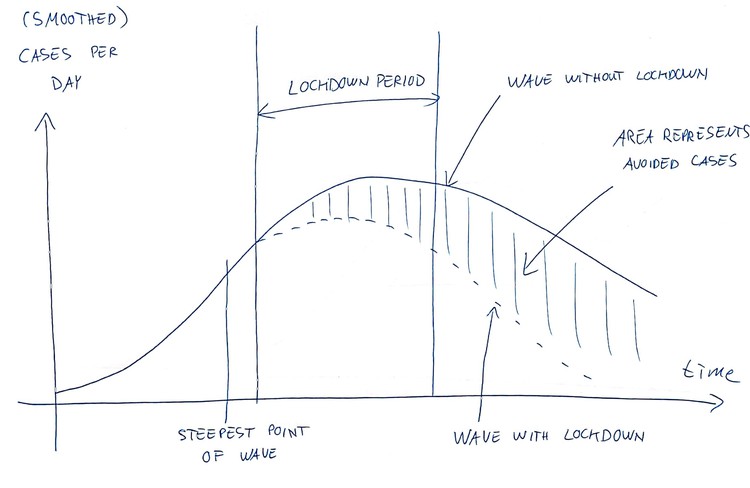The B.1.1.529 variant of SARS-CoV-2, the virus that causes Covid-19 disease, is likely to be blessed by the World Health Organisation with a Greek letter name before long, as befits any self-respecting ‘Variant of Concern’.
How serious is the new variant? We do not yet know. It may be that this variant does not turn out to give us another “delta wave” kind of experience – and that would be a great relief – but the timing could not be much worse, and the initial signs are worrying.

Black Friday – Cyber Monday
Sign up for our annual subscription and get full access to our award-winning articles, market indicators and data tools.
R630 R530*
SAVE R226 vs monthly subscription.
SUBSCRIBE NOW
*Valid until 29 Nov 2021. T&Cs apply.
Already, within less than 24 hours of the first major public briefing on the new variant, South Africa is back on the UK red list, and many travel plans are fast unravelling – not to mention the hopes for a profitable year end in the tourism industry. Jobs are almost certainly going to be lost.
Read:
SA punished for ‘wrong reasons’ over Covid variant
‘Do they not understand that this fear mongering is directly taking food out of people’s mouths’
So what are we to do?
There are a lot of questions which it will take time to answer – whether this variant really spreads particularly easily; whether it tends to make people more ill, or less ill, than other variants; whether some level of immunity against previously known strains translates into effective immunity against B.1.1.529; and so on. We will have to wait and see, and in the meantime we have to get on with our lives, so we must act without all this information.
There are some things we know.
This new variant is airborne, and its transmission is heavily dependent on people breathing the same air. Masks help reduce the spread, but, crucially, we must be prepared to forgo some social interactions; and those of us with the means to travel and entertain must be prepared to make some “sacrifices” without acting like it’s the end of the world.
The national government will already be mulling the options for lockdowns, in anticipation of the fourth wave really taking off – that it has begun is now no longer seriously in doubt.
No one wants to order tough lockdown measures, and no one wants to cancel their social life and holiday plans. Not many relish the thought of going back to homeschooling their kids indefinitely.
So whether one is thinking about a national ‘State of Disaster’ (“adjusted” level this or that), rules for office use, school attendance policies, travel, contact with vulnerable family members like grandparents, or just about how cautious to be when shopping – there are some simple ways to frame our toughest choices.
National lockdown will serve as our example.
Think about the hardest level of restrictions one is willing to face – whatever that is. Also think about how long the toughest restrictions can be tolerated. The point here is to think about some level of restriction that is both clearly effective in cutting risk, but not sustainable for more than a short time – let’s think in terms of two to four weeks.
The key point is that the most effective time to have restrictions is not at the beginning of a wave – when cases start to rise alarmingly and panic can set in. A brief lockdown, however tough, will never prevent a wave from happening. The most effective time to endure restrictions is when the peak is almost upon us (see the diagram). This way, we choke the channels of transmission specifically when there are a lot of infectious people around – and we deprive the virus in these people of opportunities for reaching other people.
Crucially, we need to implement sustainable measures at all times. There’s no point in implementing a lockdown that isn’t adhered to, but we may need bold strong measures which can be tolerated for a few weeks.
This doesn’t quite translate into a simple formula for magically doing just exactly what is best – but it offers one useful perspective on the very tough decisions we are about to face.
In short: Once you know what your big sacrifice is going to be (whether it is closing schools, or pausing visits to aging parents in need of contact) and how long you can tolerate it (let’s say three weeks, for the sake of a concrete example) then you (“you” could be the government or literally anyone reading this) watch the growing peak while training yourself to stick to the sustainable measures, and when signs are that we are a few weeks from the peak (easier said than done) then you bite that bullet and sit tight, sticking to your plan.
This graph demonstrates a rule of thumb about timing the hardest level of lockdown. Once one is reasonably sure that the steepest part of the wave has happened (that the peak is near) – implement lockdown. This will push the curve down around the peak, and have maximum impact in the total peak area, which represents the total number of cases.
© 2021 GroundUp. This article was first published here.
Stay connected with us on social media platform for instant update click here to join our Twitter, & Facebook
We are now on Telegram. Click here to join our channel (@TechiUpdate) and stay updated with the latest Technology headlines.
For all the latest Business News Click Here
For the latest news and updates, follow us on Google News.

